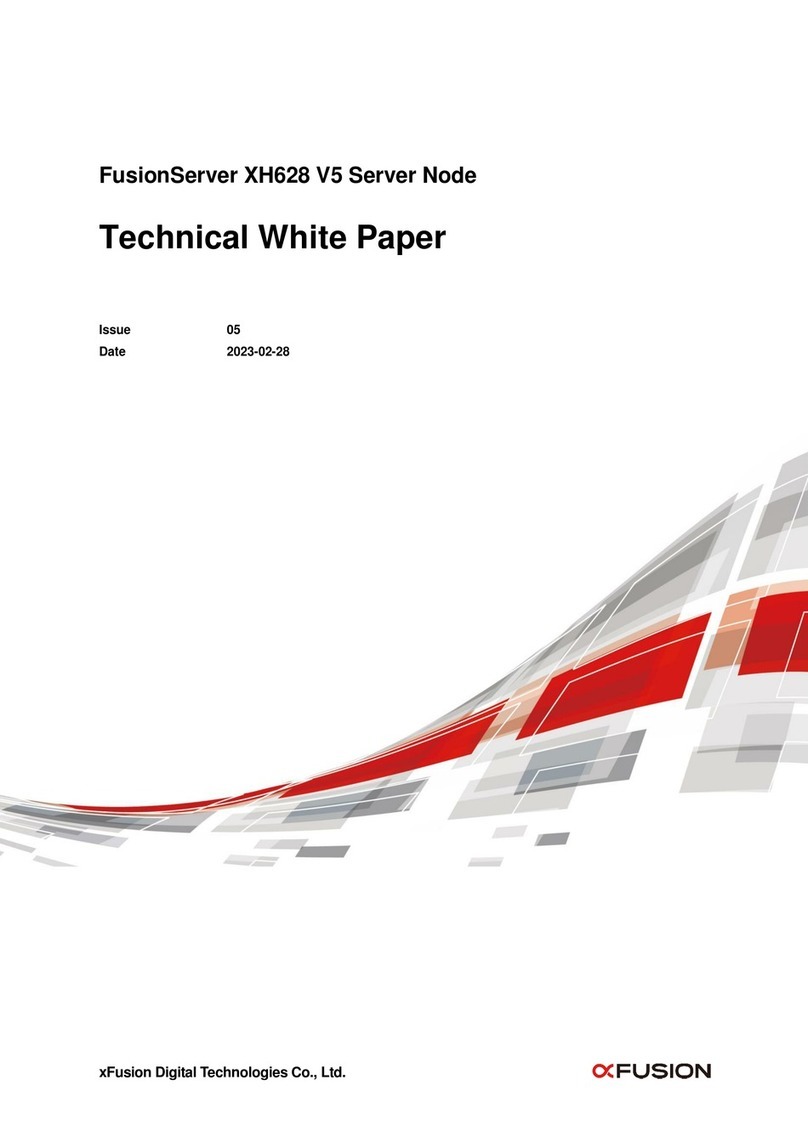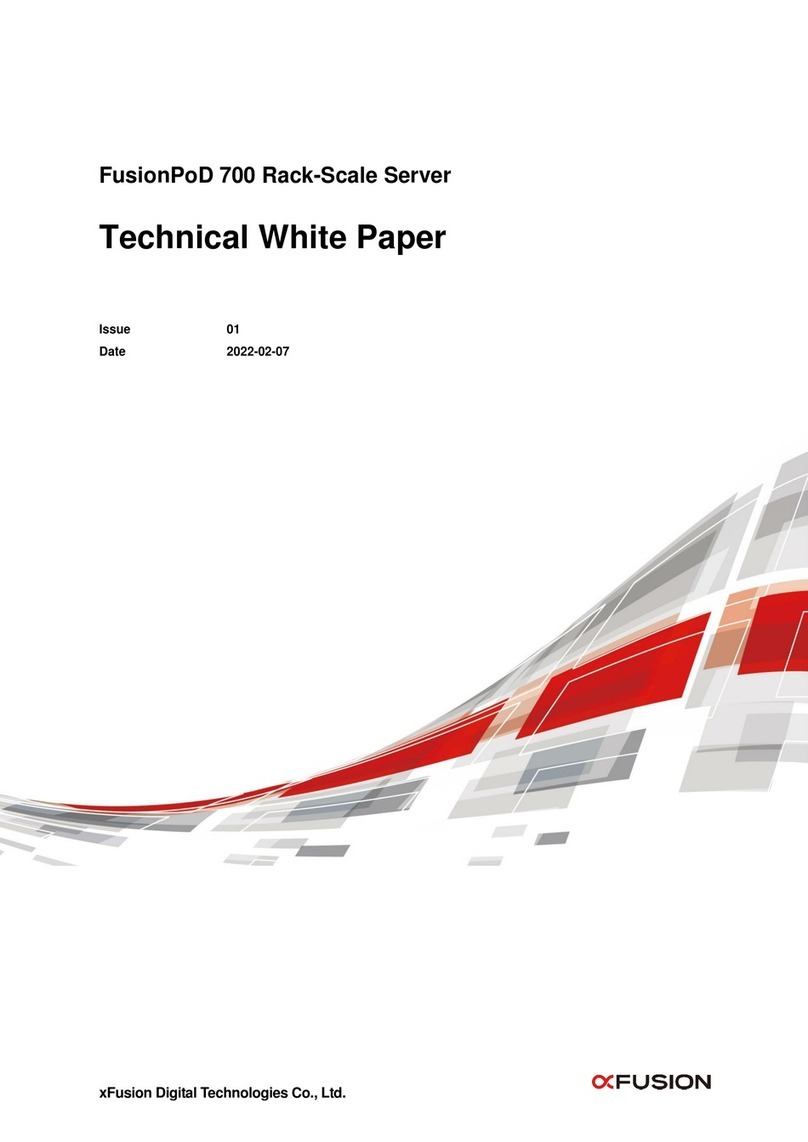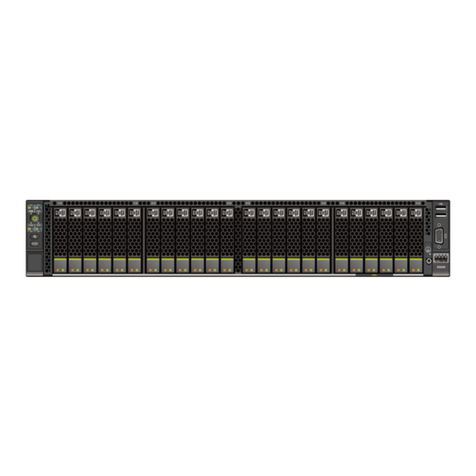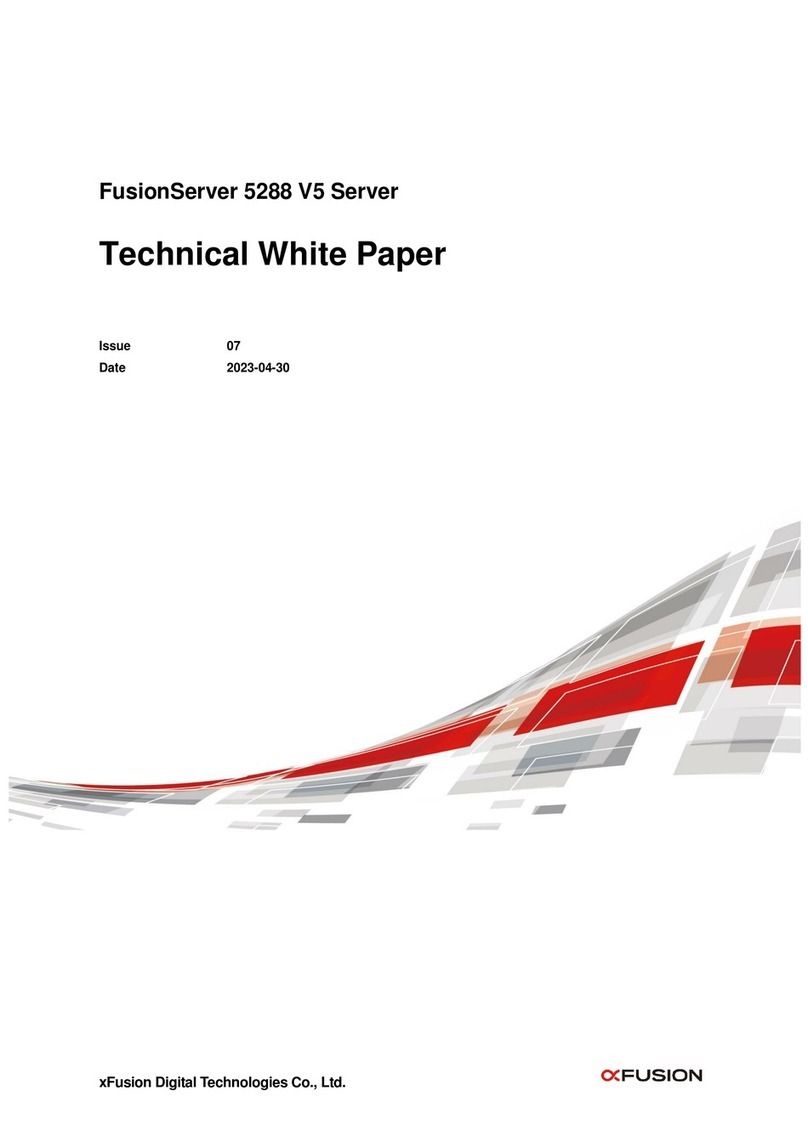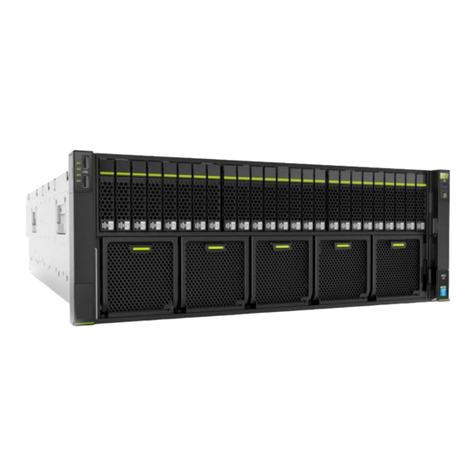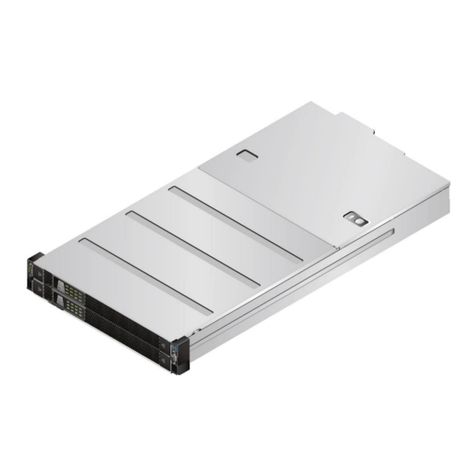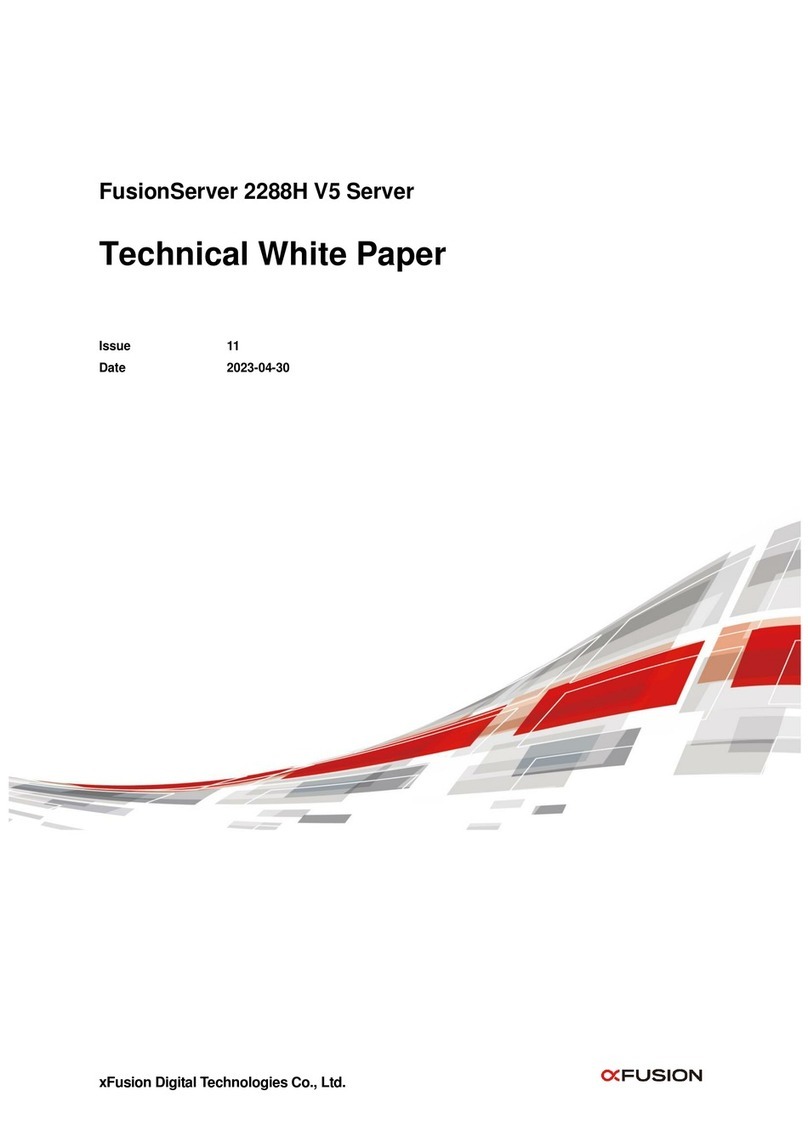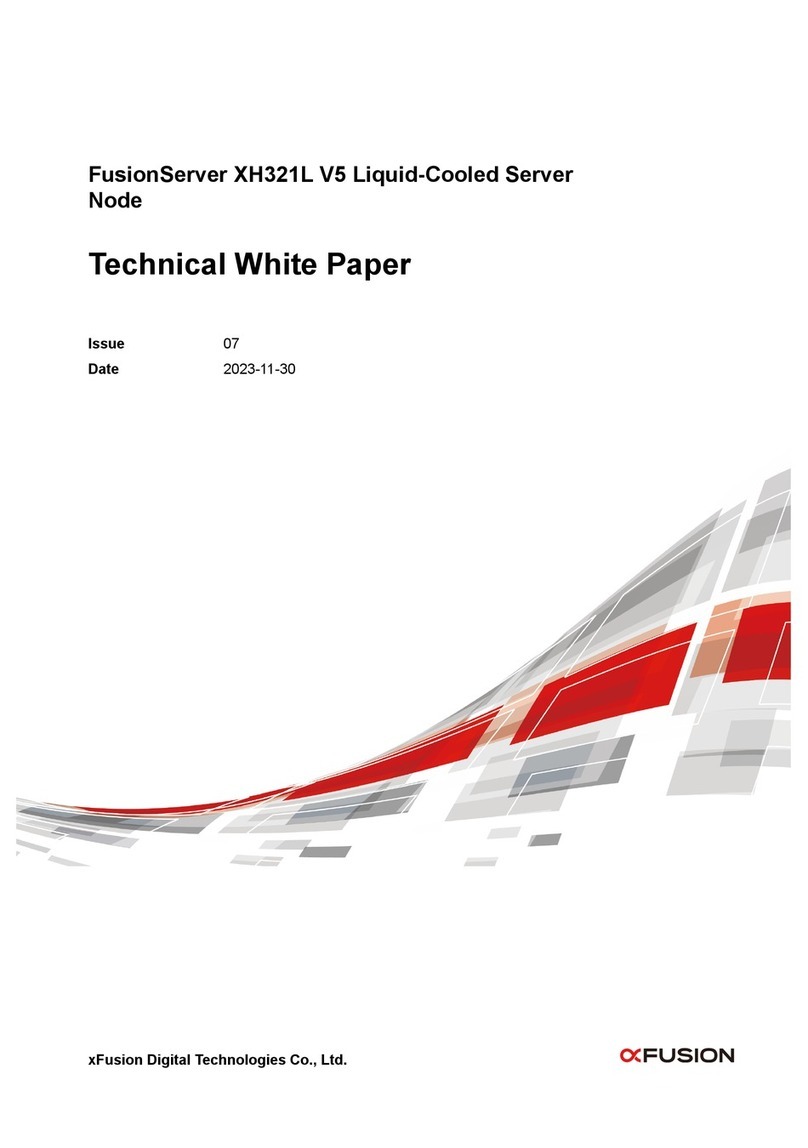Availability and Serviceability
⚫Carrier-class components with process expertise ensure high system reliability and
availability.
⚫The server supports hot-swappable SAS/SATA/NVMe U.2 drives. SAS/SATA drives
support RAID 0, 1, 5, 6, 10, 50, and 60, depending on the RAID controller card used. It
also uses a supercapacitor to protect the RAID cache data against power failures.
⚫The server provides simplified O&M and efficient troubleshooting through the UID/HLY
indicators on the front panel and iBMC WebUI.
⚫The panel provides iBMC direct connect management ports to support local iBMC O&M,
improving O&M efficiency.
⚫Each node provides one hot-swappable PSU. The entire chassis supports a maximum of
four hot-swappable PSUs in 1+1 or 2+2 redundancy.
⚫The built-in iBMC monitors system parameters in real time, triggers alarms, and
performs recovery actions to minimize the system downtime.
⚫For details about the warranty policy, visit Warranty.
Manageability and Security
⚫The built-in iBMC monitors server operating status and provides remote management.
⚫A password is required for accessing the BIOS, ensuring system boot and management
security.
⚫The NC-SI feature allows a network port to serve as a management port and a service
port. The NC-SI feature is disabled by default and can be enabled through the iBMC or
BIOS.
⚫The integrated Unified Extensible Firmware Interface (UEFI) improves setup,
configuration, and update efficiency and simplifies fault handling.
⚫Aggregated management of node management ports
⚫Intel Execute Disable Bit (EDB) function prevents certain types of malicious buffer
overflow attacks when working with a supported OS.
⚫The Intel Converged Boot Guard & Trusted Execution Technology (Intel CBnT)
prevents malicious software attacks based on hardware, prevents the firmware from
being maliciously modified, and prevents the execution of unauthorized boot blocks. It
also allows applications to run in their own independent space without being affected by
other software running in the system, thereby enhancing security.
⚫The trusted platform module (TPM) and trusted cryptography module (TCM) provide
advanced encryption functions, such as digital signatures and remote authentication.
⚫The secure boot based on the chip RoT implements level-by-level firmware verification
starting from the hardware RoT and builds a complete secure boot chain.
⚫The following requirements in NIST SP 800-147B are met:
−The BIOS firmware digital signature update mechanism is supported. During the
upgrade, the digital signature is verified to prevent unauthorized BIOS firmware
upgrade.
−The flash security protection mechanism is supported to prevent unauthorized
modification of the flash memory in the OS.
The service port with NC-SI enabled supports the following configuration:
⚫Configuring any port on the OCP 3.0 network adapter or other network adapters that support the
NC-SI feature as the service port with NC-SI enabled.
